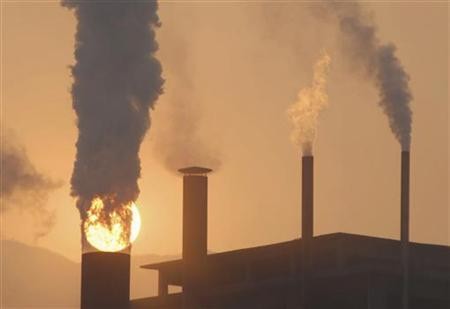
Global warming may be leading to an increase in the number of kidney stone cases, according to a study done in the US.
The study, named "Daily Mean Temperature and Clinical Kidney Stone Presentation in Five U.S. Metropolitan Areas: A Time Series Analysis", published in a journal by the National Institute of Environmental Health Sciences, reveals that as the temperature increased in a particular city, the number of patients diagnosed with kidney stones also increased.
The scientists in the study analyzed around 60,000 people (both adults and children) from 2005 to 2011 across five cities in the US. These five cities are Philadelphia, Los Angeles, Dallas, Chicago and Atlanta. They made a connection between the number of people being diagnosed with kidney stone and the temperature of that particular day.
"We found that as daily temperatures rise, there is a rapid increase in the probability of patients presenting over the next 20 days with kidney stones, said Gregory E. Tasian, MD, who is an epidemiologist and pediatric urologist at the Children's Hospital of Philadelphia (CHOP). He is also a staff at the CHOP's Centre for Pediatric Clinical Effectiveness (CPCE), the Kidney Stone Centre (KSC) and is also the lead researcher of the study.
Kidney stones is a rather painful disease that has adversely affected more than half a million people across the US, and even more worldwide. While it is mostly found in adults, it is not too unusual to find kidney stones in children either. Currently the factors that lead to kidney stones are unknown, but scientists have previously guessed that improper intake of fluids and sudden changes in dietary habits could lead to this painful disease.
The scientists found that the lower temperatures in cities like Philadelphia, Chicago and Atlanta have also increased the number of people diagnosed with kidney stones. However, the scientists also said that the lower temperatures are not directly responsible for the disease. During colder days people generally tend to stay indoors, where the temperature is exponentially higher than outdoors. That, along with the lack of physical exercise due to the indoors environment, and low intake of water, could have been leading to kidney stones in people.
The scientists have also analysed that global warming could be a direct cause of this alarming increase in the number of kidney stone cases over the past 30 years. They analysed that the temperatures all around the world has increased by 82 percent from 2000 to 2009, in comparison to the temperature of approximately the past 11,000 years.
Also, it is predicted that the emission of greenhouse gases would cause an average increase in the global temperatures by around 1 to 4.5 degrees Celsius (2 to 8 degrees Fahrenheit) by the year 2100. Tasian believes quite a sizeable percentage of the next generation run the risk of getting kidney stones. "Kidney stone prevalence has been on the rise over the last 30 years, and we can expect this trend to continue," he said. "Children will bear the brunt of this climate change."












